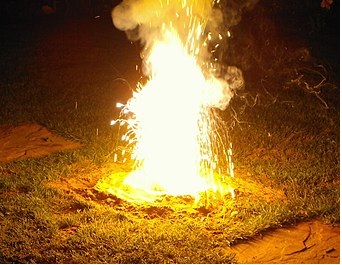Hydrogen Peroxide
Hydrogen Peroxide has historically been used as an oxidizing agent in rocket fuels. In your Methane rich environment, the heat of a flame would cause Hydrogen Peroxide to break down into water and oxygen. The oxygen would then react with your methane creating sustained combustion.
It is also relatively cheap/easy to mass produce compared to other options. Since your explores are in a remote location, you do not want to need a giant chemical plant to make the stuff, but using the Anthraquinone Electrolysis method (see: https://news.mit.edu/2019/mit-process-could-make-hydrogen-peroxide-available-remote-places-1023), your explores can produce as much hydrogen peroxide as they need using only water, electricity, and anthraquinone which can be infinitely recycled.
This would allow not just exploration of the planet, but a potential for long term habitability.
What about:
is solid
bonus point if it is something which can occur naturally, given the right conditions
Now this part will be a bit more of a stretch since it will depend a lot on the biology of your native lifeforms. On Earth, the highest concentrations of natural hydrogen peroxide are found inside of plants and animals, but still in relatively small quantities... that said, perhaps your organisms use it differently then we do on Earth. Theoretically, your native life forms could use H2O2 instead of glucose for energy storage. If this is the case, then your plants could have large concentrations of H2O2 inside of them; so, your explorers could just cut down the local flora, and burn it just like we do with wood here on earth.
Hydrogen Peroxide is one of the only non-toxic oxidizers when used in a Methane rich environment
Burning Hydrogen Peroxide in the presence of Methane with result in Carbon Dioxide and Water vapor which are generally harmless to humans making it a safe reaction for cooking and breathing around. Burning most other proposed oxidizers in the presence of methane will produce highly toxic byproducts which should not be cooked with. Potassium Nitrate will produce Potassium Hydroxide. Sodium Nitrate will produce Nitrogen Dioxide. Sodium Chlorate will produce Hydrogen Chloride.

